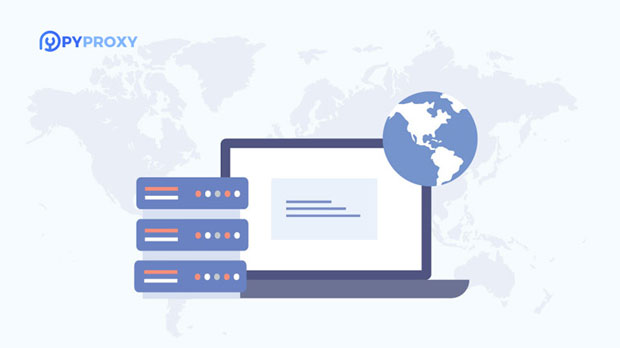In the world of internet streaming, YouTube stands as one of the most popular platforms, offering a vast array of videos for users worldwide. Many users, however, encounter various issues related to video buffering, lag, or slow loading times. One potential solution that has gained attention is using HTTPS proxies for playing YouTube videos. But does it actually improve the streaming experience? Understanding HTTPS ProxiesBefore diving into the specifics of YouTube streaming, it's important to understand what HTTPS proxies are and how they function. A proxy server acts as an intermediary between the user's device and the internet, forwarding requests to websites and returning the content back to the user. An HTTPS proxy encrypts the data sent and received, ensuring secure communication over the internet. By routing traffic through the proxy, users can mask their IP addresses and potentially access content that may be restricted in their region.When it comes to streaming YouTube videos, the use of an HTTPS proxy can impact both the speed and quality of the streaming process. To fully assess the effectiveness of this method, several factors must be considered, including the quality of the proxy server, network latency, and the geographical location of the user in relation to the content delivery network (CDN) of YouTube.Impact of HTTPS Proxy on Streaming PerformanceThe primary concern when using any proxy for streaming video is whether it can improve or hinder the overall viewing experience. Let’s break this down by looking at key factors:1. Latency and SpeedLatency, which refers to the time it takes for data to travel from the user's device to the server and back, plays a crucial role in streaming. Proxies can potentially reduce latency if they are geographically closer to YouTube's CDN. However, if the HTTPS proxy server is far from both the user and YouTube's CDN, the additional hops could introduce more latency, leading to slower video loading times and buffering issues. In some cases, proxies may also encounter bandwidth limitations, which could further slow down streaming speeds.2. Geo-restrictions and Regional PerformanceOne significant advantage of using an HTTPS proxy is the ability to bypass geo-restrictions. YouTube often restricts certain videos based on the user's location, making them inaccessible in specific regions. By connecting to a proxy server in a region where the video is available, users can access blocked content. This may lead to a smoother streaming experience, as the proxy might connect to a server optimized for video content, improving overall performance.However, if a user connects to a proxy server in a different region, they might experience performance issues. This is because the connection between the user and the proxy could be slower compared to a direct connection to YouTube’s CDN in the user’s location. As a result, streaming may become less fluid due to longer data transfer times.3. Encryption OverheadHTTPS proxies encrypt the traffic between the user's device and the proxy server, which adds an extra layer of security to the communication. While this encryption is crucial for privacy, it can also lead to a slight performance hit. The encryption and decryption processes take time and resources, which could result in a minor delay in data transmission. For most users, this delay is negligible, but for those with slower internet connections, the encryption overhead could impact video playback, especially for higher-quality videos like 4K content.4. Proxy Server QualityNot all proxies are created equal. The quality of the proxy server plays a significant role in determining the streaming experience. A high-quality HTTPS proxy with fast connections and minimal downtime can enhance video playback. On the other hand, a low-quality proxy with insufficient bandwidth or frequent connection drops can lead to buffering, stuttering, and other issues that degrade the streaming experience.Moreover, many free proxy services tend to be overloaded with users, which can slow down the performance of the proxy and negatively affect video streaming. Investing in a paid, reliable proxy service may provide a better overall experience, as it is likely to offer faster speeds, more stable connections, and greater security.5. Impact on Video QualityOne of the most noticeable aspects of streaming is the quality of the video. YouTube automatically adjusts the resolution of the video based on the user’s internet speed and connection quality. If a proxy slows down the connection or increases latency, YouTube may downgrade the video quality to ensure smooth playback. This can be particularly frustrating for users who want to watch videos in high definition (HD) or 4K resolution.In some cases, however, using a proxy could theoretically result in improved video quality if the proxy server provides a faster, more stable connection. If the proxy server is optimized for video streaming, it could help maintain higher resolutions and reduce buffering times, resulting in a better overall experience.6. Security and Privacy ConsiderationsWhile the focus of this article is on streaming performance, it's important to consider the security and privacy benefits of using HTTPS proxies. By masking the user’s IP address and encrypting the traffic, HTTPS proxies offer enhanced security for users who are concerned about their privacy. For example, users can avoid targeted advertising, prevent surveillance, and maintain anonymity while browsing YouTube.However, users should be aware of the potential risks of using untrusted proxy services. Some proxies might log user data or inject ads into the streaming experience. To ensure privacy and security, it’s crucial to choose reputable proxy providers that prioritize user protection.Conclusion: Does Using an HTTPS Proxy Improve YouTube Streaming?The impact of using an HTTPS proxy on YouTube video streaming depends on several factors, including the proxy’s quality, its location, and the user’s network conditions. In some cases, an HTTPS proxy can improve streaming by bypassing geo-restrictions, offering better access to content from different regions, and providing enhanced security. However, proxies can also introduce additional latency, reduce speeds, and cause video quality to degrade if not carefully selected.For users who experience geo-blocking or want added security while browsing YouTube, an HTTPS proxy can be a valuable tool. However, for those primarily concerned with smooth video playback, the benefits of using an HTTPS proxy may be minimal, especially if the proxy server adds too much overhead or causes connection issues. Ultimately, the effectiveness of using an HTTPS proxy depends on the specific circumstances and the quality of the proxy service in question.
Jun 26, 2025



































































